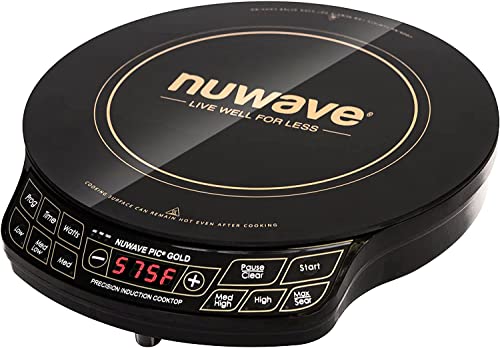SternWake
Well-known member
- Joined
- Nov 30, 2013
- Messages
- 3,874
- Reaction score
- 2
1 Kyocera 130 watt framed panel with junction box on panel
1 Unisolar pvl-68 watt adhesive flexible panel(mc3 connectors)
In parallel, Flat on roof, though the Kyocera can be tilted 90 degrees toward either side of Van, but almost never is.
130 watt panel has ~ 17' of 8awg to controller input
68 watt has ~17' of 10 awg to controller input
Controller has 4awg to battery through a 30 amp circuit breaker.
Max amps at solar noon June 21 is about 13.5. Now in September, about 11.7 amps.
Solar Controller is a BlueSky sb2512i MPPT with the optional IPN pro remote battery monitor which allows for custom voltages and durations.
Kyocera and Bluesky components installed in '07, Unisolar-68 panel added a few years ago. The Unisolar is good in low light and low sun angles increasing total solar harvest more than expected.
Right now this 198 watts feeds only a single 90AH Northstar group 27 AGM battery which is both house and engine starting battery.
4 cycles to 50% are OK on solar only recharging, the 5th night the voltage under load while discharging decreases noticeably, after this point it needs a high amp recharge from the most depleted state. Alternator or my Power supply feed it 40+ amps and restores performance and makes for a happy AGM. Solar only recharges after 5 or 6 deep cycles makes for an increasingly unhappy AGM, and then getting amps to taper to 0.42 @ 14.46v takes much much longer, and if 14.46v is not held long enough, then full performance is not restored.
I consume 35 to 65AH from this 90AH battery each night 4 to 5 nights a week. I suspect its true capacity is closer to 105AH but I will not be running a true 100% discharge capacity test over 20 hours to test that guess.
It still easily starts my engine at 65AH from full and then can gobble up upto 110 amps from my heavily cabled alternator if the engine RPMS are there and the V belt is not too slick with condensation.
I'll acquire a 12v 150AH flooded battery for a house battery by mid autumn, before winter definitely, and the Northstar will go back to the easy life.
If I had to do it over, I'd mount a single Kyocera 335 watt panel on the roof, and reinforce the frame edges and support the center of the large panel and get a MPPT charge controller capable of handling it.
I'd still get a 150AH Trojan T-1275 Flooded battery for deep cycling, and while the AGM is overkill for engine starting only, It is nice to have a battery capable of excelling at both. I would not be confident cycling flooded battery to 50% or deeper, if it was also my engine starting battery.
My SB2512i is MPPT, but cannot handle 24 or 36 volt nominal panels .
In 2007, my 130 watt panel cost 750$ delivered.
1 Unisolar pvl-68 watt adhesive flexible panel(mc3 connectors)
In parallel, Flat on roof, though the Kyocera can be tilted 90 degrees toward either side of Van, but almost never is.
130 watt panel has ~ 17' of 8awg to controller input
68 watt has ~17' of 10 awg to controller input
Controller has 4awg to battery through a 30 amp circuit breaker.
Max amps at solar noon June 21 is about 13.5. Now in September, about 11.7 amps.
Solar Controller is a BlueSky sb2512i MPPT with the optional IPN pro remote battery monitor which allows for custom voltages and durations.
Kyocera and Bluesky components installed in '07, Unisolar-68 panel added a few years ago. The Unisolar is good in low light and low sun angles increasing total solar harvest more than expected.
Right now this 198 watts feeds only a single 90AH Northstar group 27 AGM battery which is both house and engine starting battery.
4 cycles to 50% are OK on solar only recharging, the 5th night the voltage under load while discharging decreases noticeably, after this point it needs a high amp recharge from the most depleted state. Alternator or my Power supply feed it 40+ amps and restores performance and makes for a happy AGM. Solar only recharges after 5 or 6 deep cycles makes for an increasingly unhappy AGM, and then getting amps to taper to 0.42 @ 14.46v takes much much longer, and if 14.46v is not held long enough, then full performance is not restored.
I consume 35 to 65AH from this 90AH battery each night 4 to 5 nights a week. I suspect its true capacity is closer to 105AH but I will not be running a true 100% discharge capacity test over 20 hours to test that guess.
It still easily starts my engine at 65AH from full and then can gobble up upto 110 amps from my heavily cabled alternator if the engine RPMS are there and the V belt is not too slick with condensation.
I'll acquire a 12v 150AH flooded battery for a house battery by mid autumn, before winter definitely, and the Northstar will go back to the easy life.
If I had to do it over, I'd mount a single Kyocera 335 watt panel on the roof, and reinforce the frame edges and support the center of the large panel and get a MPPT charge controller capable of handling it.
I'd still get a 150AH Trojan T-1275 Flooded battery for deep cycling, and while the AGM is overkill for engine starting only, It is nice to have a battery capable of excelling at both. I would not be confident cycling flooded battery to 50% or deeper, if it was also my engine starting battery.
My SB2512i is MPPT, but cannot handle 24 or 36 volt nominal panels .
In 2007, my 130 watt panel cost 750$ delivered.









































































